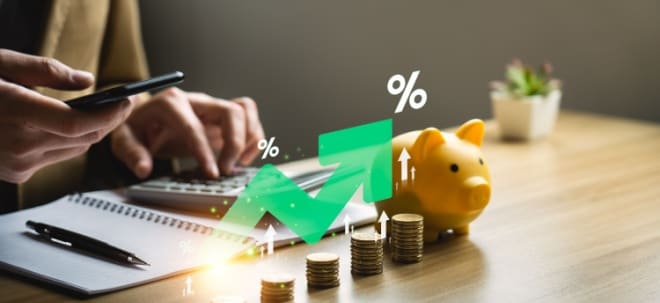Saudi Arabia to Target Solar Power, Nuclear in $100 Billion Energy Plan
By Anthony DiPaola - Mar 31, 2011 10:00 PM GMT+0200
inShare
35More Print Email
Saudi Arabia, with 20 percent of the world’s oil reserves, is targeting renewable energy and nuclear power in a $100 billion spending drive aimed at meeting a jump in electricity demand and curbing its dependence on crude. Photographer: Chris Ratcliffe/Bloomberg
Saudi Arabia, with 20 percent of the world’s oil reserves, is targeting renewable energy and nuclear power in a $100 billion spending drive aimed at meeting a jump in electricity demand and curbing its dependence on crude.
The kingdom sees solar power and other non-hydrocarbon sources as crucial parts of a plan to boost generating capacity by 50 percent in this decade, said Abdullah al-Shehri, governor of the Electricity and Co-Generation Regulatory Authority. The government may announce details of a renewable-energy strategy at a conference in the capital Riyadh on April 3.
Persian Gulf oil producers need to produce more electricity to sustain a regional economic growth rate averaging about 10 percent a year, Jarmo Kotilaine, chief economist at National Commercial Bank in Jeddah, Saudi Arabia, said on March 29. At the same time, countries in the region are hungry for new ways to generate power because they prefer exporting crude to maximize income and allocating natural gas to make petrochemicals.
“Fuel supply is one of the major challenges facing the power sector and the nation,” Saleh Al-Awaji, Saudi Arabia’s deputy minister for electricity at the Ministry of Water, said at a conference in Abu Dhabi on March 28. “The policy is to work intensely on saving energy and making sure every barrel of oil that can be saved is, and is made available for export.”
Oil For Power
Saudi Arabia, the largest producer in OPEC, uses crude and refined products as fuel for power stations because it doesn’t have enough gas to generate all the power it needs and also supply industry. Liquid fuels generate about half of the country’s power, according to the state-run utility Saudi Electricity Co. Saudi Arabia burns some 800,000 barrels a day of oil equivalent to satisfy domestic demand, Khalid Al Senani, the gas supply director at the Ministry of Petroleum and Mineral Resources, said in Doha, Qatar, on Nov. 30.
The nation’s other power plants use gas, which costs about one-fourth as much as oil on the basis of a barrel of oil equivalent, according to U.S. benchmark prices.
By burning oil to keep electricity flowing, Saudi Arabia may find it harder to maintain its global role as the crude supplier of last resort.
The country pledged to help ensure adequate supply to the market after violence curbed exports from Libya. It raised output to 8.87 million barrels a day in February, a 3.3 percent increase over January, the Organization of Petroleum Exporting Countries said in a monthly report on March 11.
Aramco’s Warning
Given consumption forecasts, Saudi Aramco Chief Executive Officer Khalid Al-Falih warned last April that national daily energy demand would more than double to 8.3 million barrels of oil equivalent in 2028 from 3.4 million barrels in 2009.
To expand generating capacity and the transmission grid, the country will need investments of more than $100 billion over the next ten years, al-Shehri of the electricity authority said in Abu Dhabi on March 28. A third of that amount will go to building power plants, including those using renewable energy, he said.
Current generating capacity is about 45,000 megawatts, according to Saudi Electricity. This is likely to increase to 75,000 megawatts by 2018 and to more than 120,000 megawatts by 2030, al-Shehri said. Saudi Arabia agreed with France in February to cooperate in developing nuclear energy and announced on Feb. 22 that it would also make use of geothermal, wind and solar power.
Solar Energy Targets
Officials from the King Abdullah City for Atomic and Renewable Energy, the agency in charge of promoting alternative energy, may announce guidelines and targets for solar generation at the conference in Riyadh, a communications consultant said. The consultant, who asked not to be identified because he’s not an authorized spokesman, declined to say how much solar energy the kingdom aims to produce.
“I’m expecting they will announce the target to generate 20 percent of their electricity from renewables by 2030,” said Paddy Padmanathan, CEO of ACWA Power International, a private Saudi electricity provider. That would equal about 18,000 megawatts, he said in Abu Dhabi, the capital of the United Arab Emirates.
“Saudi Arabia can support a huge amount of solar generation, with the country’s combination of sun and the load profile,” Padmanathan said, referring to Saudi needs that peak at midday, when sunshine is brightest.
Saudi Arabia is already experimenting with solar power to desalinate water. Al-Shehri said he expects the government to issue tenders for additional renewable projects next year.
“My guess is they’ll announce plans for a few thousand magawatts at first and take it from there,” said Alex Katon, head of Middle East business strategy for International Power Plc, a unit of GDF Suez SA. As the cost of generating power using renewable technologies falls, the kingdom should be able to add capacity more affordably, the U.A.E.-based Katon said on March 28.
To contact the reporters on this story: Anthony DiPaola in Dubai at adipaola@bloomberg.net.
To contact the editor responsible for this story: Stephen Voss at sev@bloomberg.net |


 Thread abonnieren
Thread abonnieren



